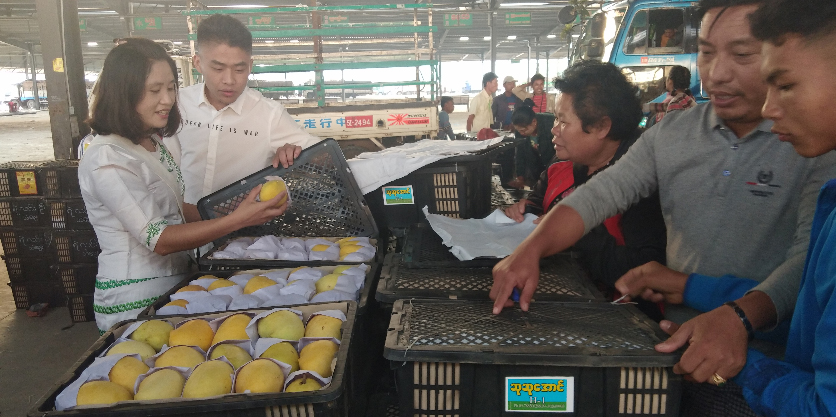June 09, 2020
China’s fruit demand falls by around 30 per cent amid the coronavirus pandemic and so, Myanmar fruit market is experiencing hurdles and losses, said a trader from Khwar Nyo fruit depot.
The prices of mango are on the decline. The low demand keeps market weak, he continued.
Seintalone mango fetches around 80-90 Yuan per basket, while Shwehinthar mango was priced 35-65 Yuan per basket, according to the Muse market.
This year, the coronavirus risks lead to losses in fruit market due to transport difficulties and trade disruption, said a grower from Kyaukpadaung Township.
Concerning exports of watermelon, muskmelon and mango, it is important not to rely on the Chinese market alone, traders from Muse pointed out.
The mango growers are urged to supply the quality mango to maintain the market reputation.
Additionally, the mango farm-owners need to follow the Good Agricultural Practices (GAP).
They also need to obtain GAP certification. The Agriculture Department has been instituting criteria for long-term organic farming.
In the 2017-2018 financial year, Myanmar exported 50,000 tonnes of Seintalone mangoes. The country aims to raise the export volume of Seintalone to 100,000 tonnes in 2020, according to the online news released by the Ministry of Commerce.
Of about 200 mango varieties originated in Myanmar, Seintalone, Shwehintha, Padamyar Ngamauk, Yinkwe, Machitsu varieties are primarily grown. The foreign market prefers Seintalone variety.
Myanmar’s mangoes are primarily shipped to China, and also, the small volume goes to India, Bangladesh, Thailand, the Republic of Korea, Singapore, and Japan markets.
Ayeyawady Region possesses the largest mango plantation acres, having about 46,000 acres. Bago Region is the second-largest producer with 43,000 acres and Mandalay has 29,000 acres of mango. There are over 24,000 acres in Kayin State, over 20,400 acres in Shan State and over 20,000 acres in Sagaing Region, according to the association.— Ko Htet (Translated by Ei Myat Mon)


